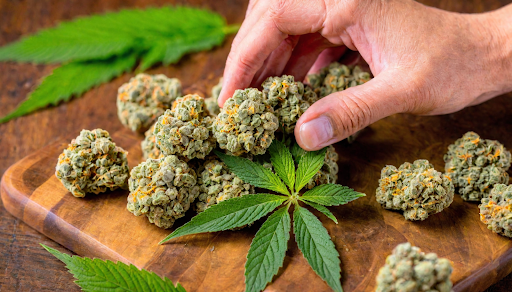Cannabis edibles have become one of the most popular consumption methods for those who prefer a smoke-free experience. Unlike smoking or vaping, edibles take your body on a completely different journey — one that involves your digestive system, liver, and bloodstream before you ever feel the effects. To understand why edibles hit differently and last longer, let’s break down exactly how your body processes THC when you consume cannabis-infused foods or drinks.
1. What Happens When You Eat a THC Edible?
When you eat a brownie, gummy, or infused chocolate, the tetrahydrocannabinol (THC) doesn’t immediately enter your bloodstream like it does with inhalation methods. Instead, your body follows these steps:
- Digestion begins in the stomach: The edible is broken down along with any other food you’ve eaten.
- Absorption in the intestines: THC travels to the small intestine, where it’s absorbed into the bloodstream.
- Liver metabolism: Before reaching your brain, THC passes through the liver. Here, it is converted into a stronger metabolite called 11-hydroxy-THC, which is largely responsible for the intense and long-lasting effects of edibles.
This conversion is what makes edibles feel more potent than smoking the same amount of cannabis.
2. Why Do Edibles Take Longer to Kick In?
Patience is key with edibles. The delayed onset is a result of digestion and liver processing. Typically:
- Effects can begin 30–90 minutes after consumption.
- The peak experience occurs around 2–3 hours in.
- The overall duration can last anywhere from 4–8 hours, depending on metabolism, dosage, and individual tolerance.
This time frame can vary widely. Someone with a fast metabolism may feel effects sooner, while others may wait longer.
3. Factors That Influence How Your Body Processes THC
Everyone experiences edibles differently. Key factors include:
- Metabolism speed – A faster metabolism means quicker absorption and onset.
- Body composition – Higher fat content can store THC longer, potentially intensifying or prolonging effects.
- Food intake – Eating edibles on an empty stomach can make effects stronger and quicker, while a full meal slows absorption.
- Dosage and potency – The higher the milligram content of THC, the stronger and longer-lasting the high.
- Individual tolerance – Frequent cannabis consumers may process THC differently than beginners.
4. Edibles vs. Smoking: The Key Differences
- Absorption method: Smoking delivers THC directly into the lungs and bloodstream, while edibles must pass through the digestive system.
- Onset time: Smoking works almost instantly; edibles can take over an hour.
- Potency: Edibles often feel more intense due to 11-hydroxy-THC.
- Duration: Edibles last longer, making them better for sustained effects such as sleep support or chronic pain relief.
For cannabis enthusiasts in Canada looking for convenient options, services such as weed delivery Richmond make it easier to explore edible products from the comfort of home.
5. How Your Liver Converts THC Into 11-Hydroxy-THC
One of the most fascinating aspects of edible consumption is first-pass metabolism. Here’s what happens:
- The liver breaks down THC.
- It produces 11-hydroxy-THC, a metabolite more efficient at crossing the blood-brain barrier.
- This compound produces a stronger psychoactive effect than THC inhaled through smoke or vapor.
This process explains why a small edible dose can sometimes feel more powerful than smoking an entire joint.
6. Common Experiences With Edibles
Consumers often report the following effects:
- Body relaxation and pain relief.
- Heightened sensory perception, sometimes more vivid than with smoking.
- Stronger sedative properties, especially with higher doses.
- A more gradual comedown compared to inhalation.
That said, edibles can also be overwhelming if too much is consumed, leading to symptoms like anxiety or dizziness. Beginners are encouraged to “start low and go slow.”
7. Safety Tips for Consuming THC Edibles
To enjoy edibles responsibly:
- Begin with 2.5–5 mg THC if you’re new.
- Wait at least 2 hours before considering another dose.
- Store edibles away from children and pets.
- Choose lab-tested products for consistent dosing.
For a deeper look into cannabis education, dosing insights, and unbiased evaluations, you can explore Hemp product reviews and guides on hemp247.com. These resources help consumers make informed decisions about what type of product fits their lifestyle and wellness needs.
8. The Future of THC Edibles
With innovation in the cannabis industry, edibles are evolving rapidly. We’re now seeing:
- Nano-emulsified THC for faster onset.
- Low-dose microdosing options for functional use.
- Hybrid formulations combining CBD and THC for balanced effects.
- Specialized products like beverages and dissolvable strips.
These advancements are designed to give consumers more control and a safer, more predictable experience.
Conclusion
Your body processes THC edibles through a unique path involving digestion and liver metabolism, which explains their powerful and long-lasting effects. By understanding how factors like dosage, metabolism, and liver conversion impact your experience, you can make smarter, safer choices when enjoying cannabis edibles.
Whether you’re looking for recreational enjoyment or therapeutic relief, edibles offer a controlled and smoke-free alternative that continues to grow in popularity worldwide.
ALSO READ: Turn Back the Clock: Discover the Secret to a Younger Neck in Dubai

